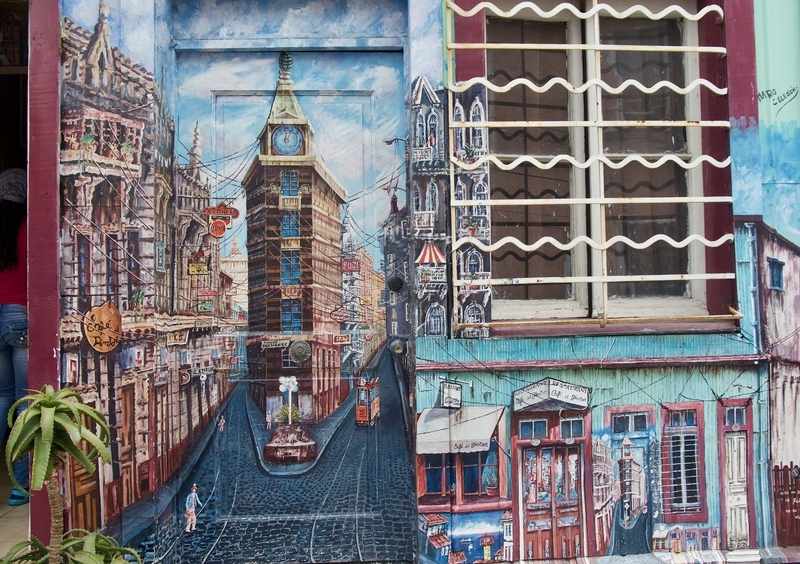
Valparaiso Day Trip from Santiago
Valparaiso weaves a colorful web of character and charm. Known lovingly as Valpo, the artsy Chilean city sprawls across a series of hills that overlook the sea.
The city is an assault to the senses. It is an artist’s dream; a photographer’s playground. Colors burst from every inch of Valparaiso’s real estate. Art seeps into its every pore.
Perhaps Pablo Neruda, who was inspired by this hard-working city, said it best:
‘Valparaiso, how absurd you are…what a lunatic crazy port…you haven’t combed your hair, you’ve never had time to get dressed, life has always surprised you.’
VALPO: CHILE’S COLORFUL CITY
Whereas Santiago is all about business and government, Valparaiso inspires creativity. This bustling port town is, in many ways, everything nearby Santiago is not. It is syncopated, dilapidated and bursting with flair. Its ramshackle streets are seemingly pieced together at random–often incongruous, yet also harmonious.
Valpo’s beauty lies in this organized chaos.
Chilean artists, writers and musicians have long made this beguiling city their home and have drawn inspiration from its cerros and ocean views.
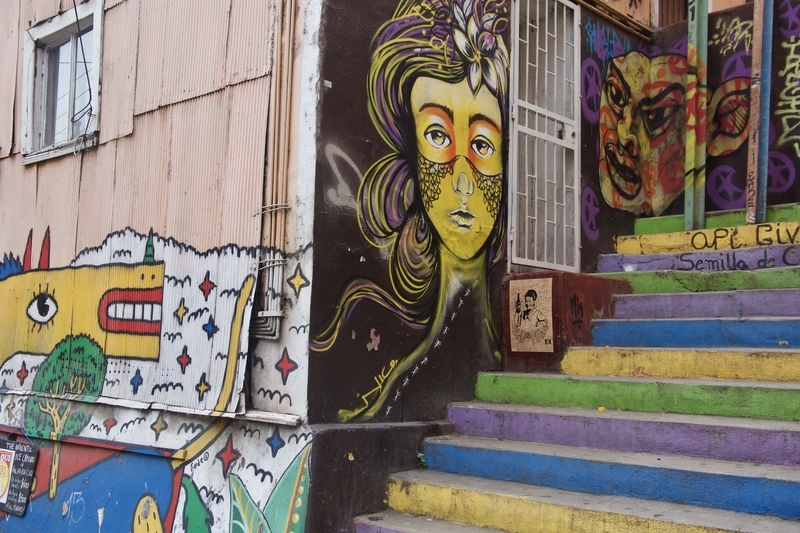
With its vibrant street art and its picturesque streets, Valparaiso is a popular day trip destination from Santiago.
I’d wanted to visit the city since Dan and I flew through Santiago en-route to Patagonia. But time constraints forced us to put a visit to the city on hold.
So when I found myself in Santiago again on my way to Easter Island, I made sure to dedicate a day to the Chile’s colorful city by the sea.
VALPARAISO HISTORY
Throughout the 19th century, Valparaiso was the pearl of South America‘s Pacific Coast and a major stopover point for ships traveling the Straits of Magellan. The city flourished during this time and attracted immigrants from Britain, Germany, Italy and France. In its heyday, Valparaiso was lovingly deemed Little San Francisco for its stately mansions, its hilly layout and its seaside views.
In the twentieth century, however, the opening of the Panama Canal meant ships no longer needed to circumvent South America entirely to travel from the Pacific to the Atlantic. As a result, they bypassed Valparaiso altogether and the city’s economy–once heavily reliant on the ships stopping by–began to stagnate. Wealthy families left the once prosperous city in droves.
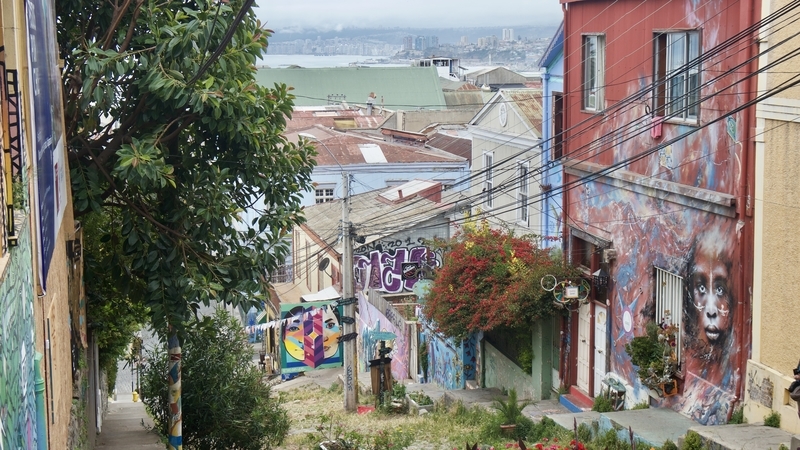
Today, Valparaiso has rebounded. Its economy relies mostly on exports, but the city’s revival has also attracted artists, entrepreneurs and tourists keen on seeing the city’s open-air gallery.
THE MURALS OF VALPARAISO
Under the Pinochet dictatorship, street art in Valparaiso emerged as a form of protest. Since it could be expressed anonymously, art was a safe way of resisting authorities and spreading messages.
Today, artists have turned the city into a canvas. Homes, businesses and churches are awash with eye-popping designs depicting Chile’s culture, its history and its humor.
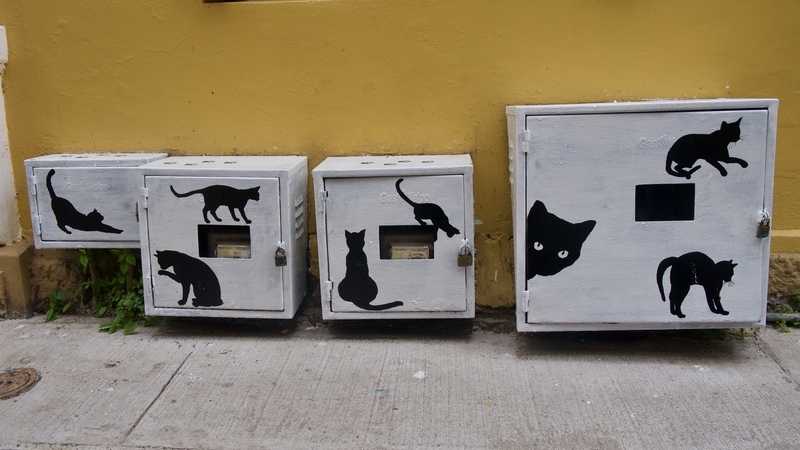
Valparaiso’s streets are like Melbourne’s laneways on steroids. Some murals are funny. Others are ironic. Some are political statements. Others are merely playful decorations.
WALKING TOURS OF VALPARAISO
There are several walking routes across Valparaiso that are great for discovering the local art. I recommend focusing on Cerro Alegre and Cerro Concepcion–two hillsides that are particularly colorful and dynamic.
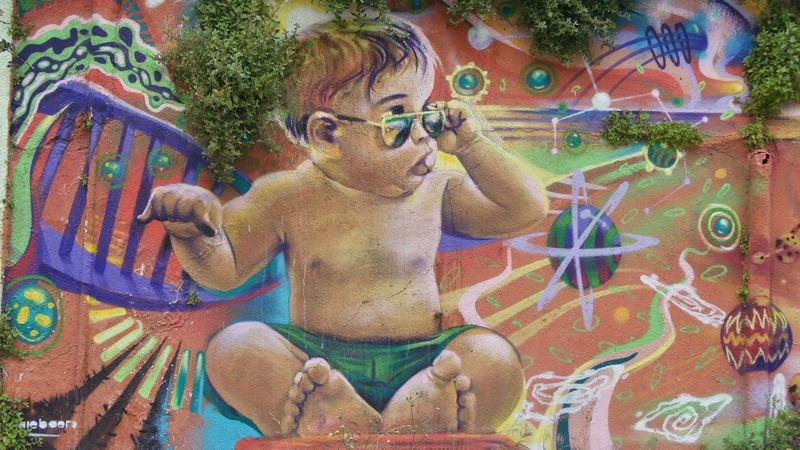
Twisting sharply upwards from the waterfront, the neighborhoods of Alegre and Concepcion offer winding cobblestone streets, sweeping views of the clapboard houses, and some of the city’s most famous street art.
We didn’t join any city tours during our day trip to Valparaiso. Instead, we let our feet guide us and followed our instinct.
If you’re wanting to take in the best of Valparaiso’s murals and views, there are a number of guided tours that will take you to the area’s must-see public art installations.
GETTING AROUND VALPARAISO
Valparaiso is best explored on foot, despite the fact that its hilly topography can make it an exhausting place to visit. The city is spread out across 43 hills called cerros.
Luckily, weary travelers can take advantage of a series of elevators that are sprinkled throughout the city. These urban lifts, known as funiculars, cost roughly fifty cents to ride and often overlook some of the city’s best views.
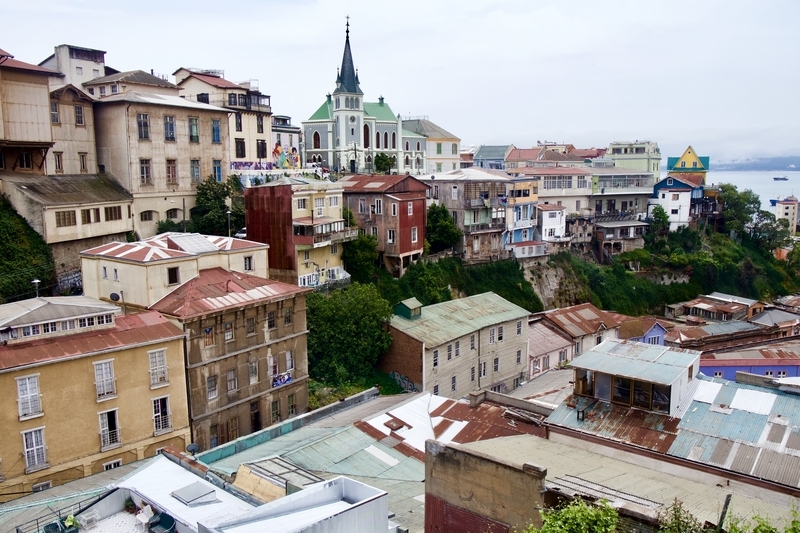
There are twenty-two funiculars in Valparaiso, and I’m sure that each boasts worthwhile views. Acensor Concepcion, Acensor Peral (on Cerro Alegre) and the Artilleria Railway are among the lifts that offer the greatest rewards.
WHERE TO STAY IN VALPARAISO
Traveling to and from Valparaiso in one day is incredibly popular. However, if you’re looking to savor the city and its art, you might want to spend at least one night in town.
In my research, I came across a few different properties that I believe offer exceptional value for money. These places are among the best-reviewed in Valparaiso and target different budgets.
If you’re looking to stay somewhere inexpensive, Pontoval B&B offers budget rooms, a pool, and complementary breakfast.
AYCA La Flora Boutique Hotel, located in the heart of Cerro Concepcion, is a highly-rated mid-range option with ocean views and clean rooms.
GETTING TO VALPARAISO
The journey between Santiago and Valparaiso takes roughly two hours and passes by vineyards and rolling hills in the direction of Vina del Mar. From the Pajaritos Station in Santiago, two bus companies–Pullman and Turbus–offer convenient options for a Valparaiso day trip.
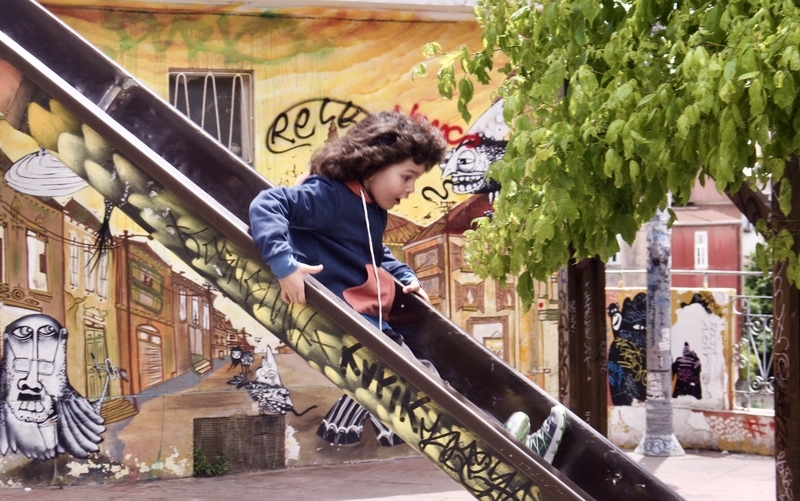
Buses leave nearly every fifteen minutes between the hours of 6:00am and 10:30pm. Travel time between the cities is roughly two hours, depending on traffic.
****
Before setting out on our Valparaiso day trip, I had a vague idea of the famous murals I wanted to see. I wondered if I should create a map for my journey by pinpointing their locations on Google Maps.
But I decided not to.
Instead, I let my eyes and my feet lead the way.
And I’m happy I chose to follow my intuition rather than my phone, because I happened across delightful murals that I may have missed, had I stayed along a scripted path.


